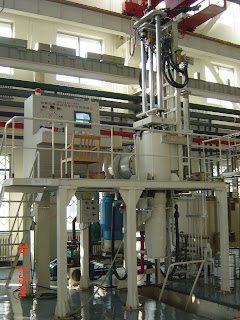Vacuum Oil/Gas Quench Furnaces (VOQ)
The two-chamber design of the VOQ vacuum furnace can meet all of your changing application needs. Depending on process requirements, the user can select quenching with either oil or inert gas.
The versatile VOQ vacuum furnace is ideal for incorporation of heat treatment can also handle a multitude of thermal processes for a variety of materials including:
Hardening with gas or oil quench
Carburizing with gas or oil quench
Carbonitriding with oil quench
Brazing
Annealing
Solution annealing
Aging/stress relieving
Tempering
Carburizing with gas or oil quench
Carbonitriding with oil quench
Brazing
Annealing
Solution annealing
Aging/stress relieving
Tempering


